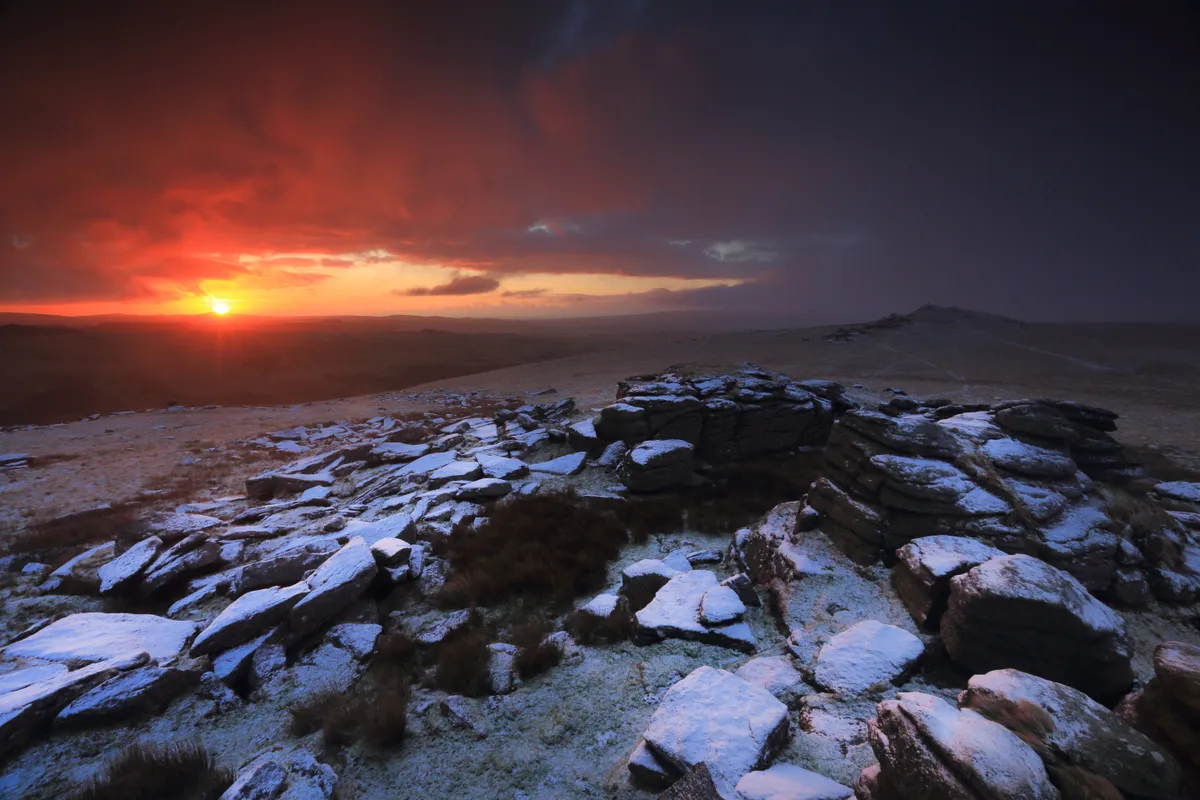Characterised by Sir Arthur Conan Doyle as “so vast, and so barren, and so mysterious”, Dartmoor has often been described as southern Britain’s last wilderness.
Dartmoor’s 150 named tors are a major attraction for the walker. They originated an unimaginable 280 million years ago as molten magma, cooled and crystallised to form the hard granite we see today. Aeons of erosion by ice, wind, rain and frost have left the tors standing proud.

A Challenging. 8.4-mile hike through the heart of Dartmoor National Park.
8.4 miles/13.5km | 5–6 hours | challenging
1. Pixies' abode
So, let’s take a Grand Tor around some of central Dartmoor’s most outstanding physical features, starting from the car park opposite the Two Bridges Hotel. Take the path north up the West Dart valley, passing beneath Crockern Tor – where the medieval stannary courts were held to judge disputes in Devon’s tin industry – and the scattered rock bastions of Littaford Tors.
In the valley below you’ll soon come across the magical, wizened and moss-cloaked pedunculate oak woodland of Wistman’s Wood (no access), a National Nature Reserve that surely must be the abode of Dartmoor’s famous pixies.

2. Rough ramble
You can now decide whether you want to continue up to Longaford Tor and Higher and Lower White Tors to reach the high point of Rough Tor. Be warned, this route makes it a rough, tough moorland walk, and you’ll need to check firing times before heading out because it enters the Army’s Merrivale Live Firing Range. Alternatively, you can halve the length of the walk by simply retracing your steps, following the 18th-century Devonport Leat back to Two Bridges.
If you decide to continue, you will approach Rough Tor from the ruins of Brown’s House. As noted by local author Josephine Collingwood, the tor gives the impression of a surfacing submarine, because of the incongruous military hut and chimney on its 547m peak.
You may also like:

After admiring the wonderful views from Rough Tor, cross the col to reach the insignificant rocks of Devil’s Tor. But the Devil lies in its detail; on its western flank stands the famous prehistoric landmark of Beardown Man, a slender, 11-foot-high standing stone dating back some 4,000 years.
3. Circles and rows
As you descend into the valley of the Cowsic River, the sublime continuity of the moor’s history is revealed. Pass the remains of hut circles, a stone row and three tinners’ huts as you turn east to contour the south side of Lydford Tor. You soon reach the grand maze of outcrops above Wistman’s Wood known as Beardown Tors, then you just follow the Devonport Leat back to the start.
Rough Tor, Devil’s Tor and Beardown Tors walking route and map


